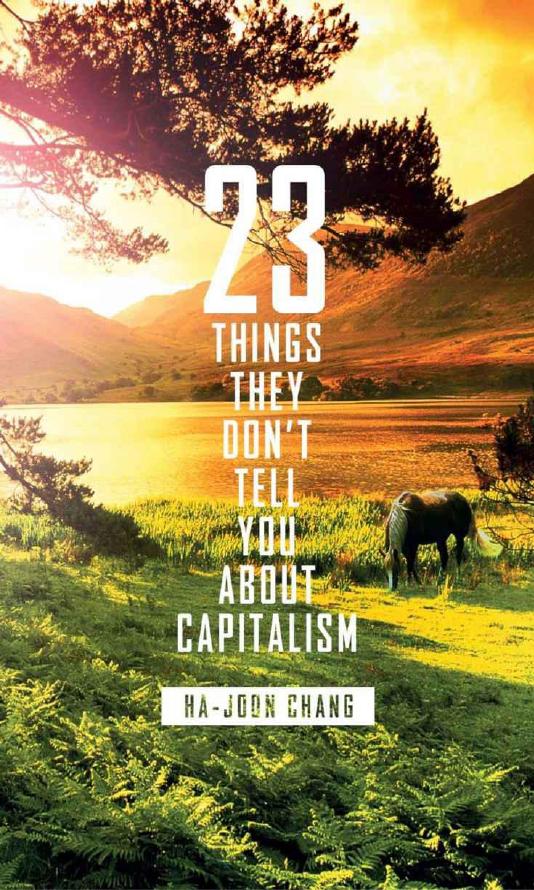23 Things They Don't Tell You About Capitalism by Ha-Joon Chang

Author:Ha-Joon Chang [Chang, Ha-Joon]
Language: eng
Format: epub, mobi, pdf
Tags: General, Political Science, Business & Economics, Economics, Free Enterprise
ISBN: 9781608191666
Publisher: Bloomsbury USA
Published: 2010-01-01T00:00:00+00:00
The ghost of Stalin – or is it Preobrazhensky?
With the devastation of the First World War, the Soviet economy was in dire straits in 1919. Realizing that the new regime had no chance of surviving without reviving food production, Lenin launched the New Economic Policy (NEP), allowing market transactions in agriculture and letting the peasants keep the profits from those transactions.
The Bolshevik party was split. On the left of the party, arguing that the NEP was no more than a regression to capitalism, was Leon Trotsky. He was supported by the brilliant self-taught economist Yevgeni Preobrazhensky. Preobrazhensky argued that if the Soviet economy was to develop it needed to increase investment in industries. However, Preobrazhensky argued, it was very difficult to increase such investment because virtually all the surplus the economy generated (that is, over and above what was absolutely necessary for the physical survival of its population) was controlled by the farmers, as the economy was mostly agricultural. Therefore, he reasoned, private property and the market should be abolished in the countryside, so that all investible surplus could be squeezed out of it by the government suppressing agricultural prices. Such surplus was then to be shifted to the industrial sector, where the planning authority could make sure that all of it was invested. In the short run, this would suppress living standards, especially for the peasantry, but in the long run it would make everyone better off, because it would maximize investment and therefore the growth potential of the economy.
Those on the right of the party, such as Josef Stalin and Nikolai Bukharin, Preobrazhensky’s erstwhile friend and intellectual rival, called for realism. They argued that, even if it was not very ‘communist’ to allow private property in land and livestock in the countryside, they could not afford to alienate the peasantry, given its predominance. According to Bukharin, there was no other choice than ‘riding into socialism on a peasant nag’. Throughout most of the 1920s, the right had the upper hand. Preobrazhensky was increasingly marginalized and forced into exile in 1927.
However, in 1928, it all changed. Upon becoming the sole dictator, Stalin filched his rivals’ ideas and implemented the strategy advocated by Preobrazhensky. He confiscated land from the kulaks, the rich farmers, and brought the entire countryside under state control through collectivization of agriculture. The lands confiscated from the kulaks were turned into state farms (sovkhoz), while small farmers were forced to join cooperatives or collective farms (kolkhoz), with a nominal share ownership.
Stalin did not follow Preobrazhensky’s recommendation exactly. Actually, he went rather soft on the countryside and did not squeeze the peasants to the maximum. Instead, he imposed lower-than-subsistence wages on industrial workers, which in turn forced urban women to join the industrial workforce in order to enable their families to survive.
Stalin’s strategy had huge costs. Millions of people resisting, or being accused of resisisting, agricultural collectivization ended up in labour camps. There was a collapse in agricultural output, following the dramatic fall in the number of traction
Download
23 Things They Don't Tell You About Capitalism by Ha-Joon Chang.epub
23 Things They Don't Tell You About Capitalism by Ha-Joon Chang.mobi
23 Things They Don't Tell You About Capitalism by Ha-Joon Chang.pdf
This site does not store any files on its server. We only index and link to content provided by other sites. Please contact the content providers to delete copyright contents if any and email us, we'll remove relevant links or contents immediately.
International Integration of the Brazilian Economy by Elias C. Grivoyannis(92025)
The Radium Girls by Kate Moore(11930)
Turbulence by E. J. Noyes(7942)
Nudge - Improving Decisions about Health, Wealth, and Happiness by Thaler Sunstein(7622)
The Black Swan by Nassim Nicholas Taleb(7016)
Rich Dad Poor Dad by Robert T. Kiyosaki(6414)
Pioneering Portfolio Management by David F. Swensen(6230)
Man-made Catastrophes and Risk Information Concealment by Dmitry Chernov & Didier Sornette(5926)
Zero to One by Peter Thiel(5692)
Secrecy World by Jake Bernstein(4652)
Millionaire: The Philanderer, Gambler, and Duelist Who Invented Modern Finance by Janet Gleeson(4386)
The Age of Surveillance Capitalism by Shoshana Zuboff(4216)
Skin in the Game by Nassim Nicholas Taleb(4165)
Bullshit Jobs by David Graeber(4101)
The Money Culture by Michael Lewis(4083)
Skin in the Game: Hidden Asymmetries in Daily Life by Nassim Nicholas Taleb(3935)
The Dhandho Investor by Mohnish Pabrai(3706)
The Wisdom of Finance by Mihir Desai(3659)
Blockchain Basics by Daniel Drescher(3511)
